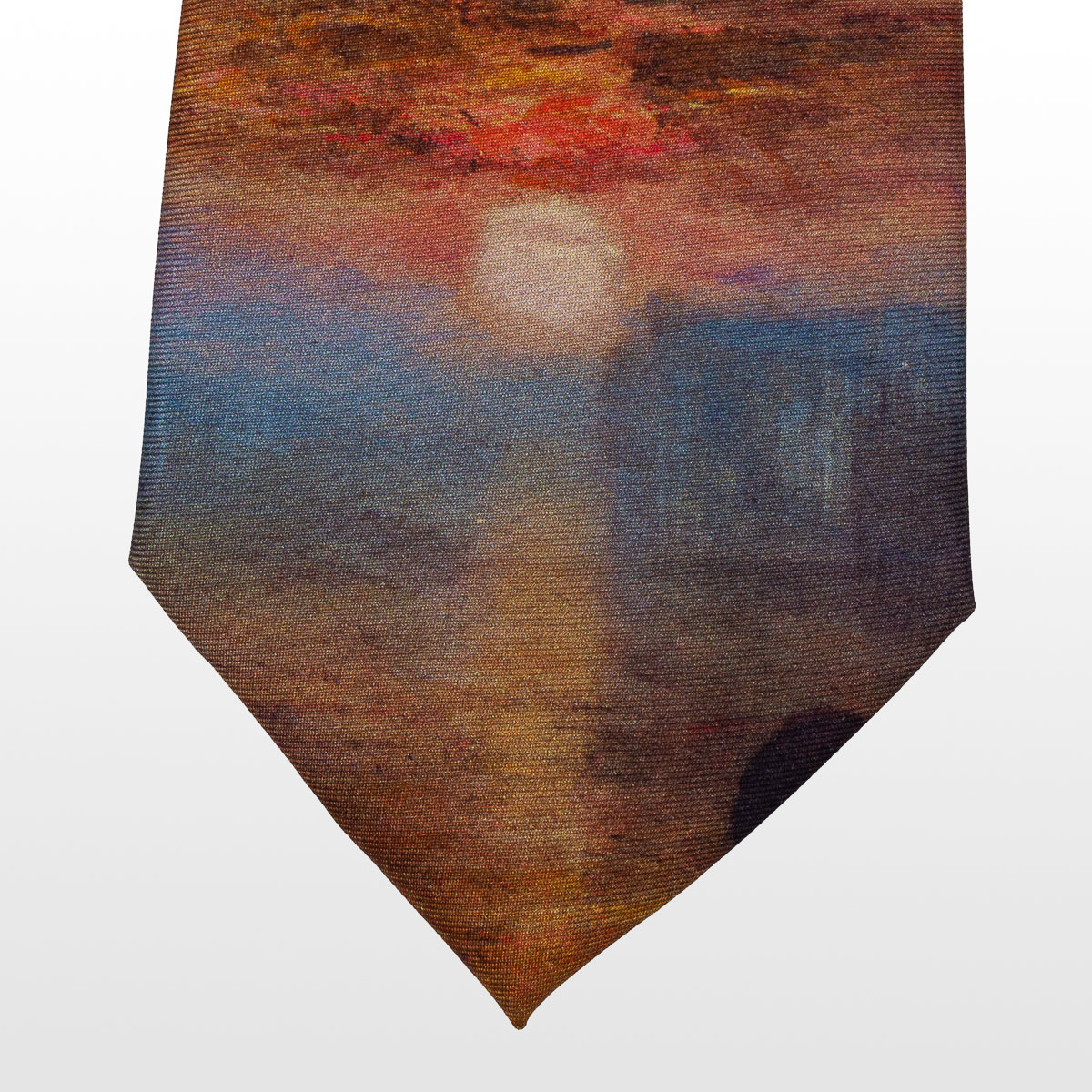Tel : (+33) 4 94 63 18 08
9am - 6pm from Monday to Saturday
All products William Turner • Products of the topic Impressionism
Silk tie - William Turner - Fighting Temeraire
REF : CRA-TURN-02
In stock
Only 1 in stock
Unavailable
55,00 €
William Turner Pure Silk Tie "Fighting Temeraire"
100% silk
Handmade finishes of exceptional quality
This Claude MONET tie measures 150 cm in length with a classically English blade width of 8.5cm.
Impressionism
The Impressionist movement in painting emerged in France in the 1870s and developed until the end of the 19th century. It was characterized by the use of light and color to capture impressions of the surrounding world, rather than accurately representing reality. Impressionists also used rapid brushstrokes and vibrant colors to capture the effect of changing light on objects and landscapes. The main Impressionist artists included Claude Monet, Edgar Degas, Pierre-Auguste Renoir, Camille Pissarro, and Berthe Morisot. Famous works by Monet include "Impression, Sunrise" (1872), "Water Lilies" (1905-1926), and "The Bridge at Argenteuil" (1874). Degas is known for his paintings of ballet scenes such as "The Dance Class" (1871) and "Dancers Resting" (1879), as well as numerous paintings of women bathing. Renoir is known for his paintings of everyday life scenes such as "The Ball at the Moulin de la Galette" (1876) and "The Large Bathers" (1884-1887). Pissarro produced many landscape paintings including "Place du Théâtre-Français" (1898) and "Boulevard Montmartre, Spring Morning" (1897). Morisot is known for her numerous paintings of women and everyday life scenes such as "The Boating Party" (1881) and "Young Girl at the Window" (1870). In addition to these famous artists, the Impressionist movement was also influenced by artists such as Paul Cézanne, Paul Gauguin, and Vincent Van Gogh. Cézanne is known for his landscape paintings of the area around his hometown of Aix-en-Provence, as well as his still life paintings. The Impressionist movement was initially criticized by art conservatives for several reasons. Firstly, Impressionists were criticized for their unconventional use of color and light. While traditional painters strived to represent colors accurately and realistically, Impressionists used brighter and more vibrant colors, and employed painting techniques like pointillism to create effects of light and movement. Secondly, Impressionists were criticized for their lack of respect for academic rules and traditional perspective. While academic painters strived to represent objects accurately and realistically, Impressionists chose to represent objects more abstractly and stylized, focusing on the sensations and emotions they wanted to convey rather than the precision of representation. Finally, the Impressionist movement was criticized for its lack of political and social substance. While many painters of the time engaged in important political and social subjects, Impressionists chose to focus on lighter and more everyday subjects, such as scenes of everyday life and landscapes. Due to these criticisms, the Impressionist movement had trouble finding an audience at first, and its members often had difficulty selling their works. However, the movement eventually gained popularity in the 1880s and 1890s and eventually became one of the most famous and influential artistic movements in history.
Discover the artist
Turner William
Joseph Mallord William Turner was an English artist born on April 23, 1775 in Covent Garden, London. He was considered one of the most important painters of the Romantic era in England. Turner studied art and painting at the Royal Academy of Painting and Sculpture in London. He began his career by exhibiting his works in galleries and exhibitions in London. His paintings were mainly landscapes and genre scenes, but he also produced historical works and paintings of ships. Among Turner's most famous works are "The Fighting Temeraire" (1839), an oil on canvas painting that represents a warship leaving the port of London to be demolished. This painting was widely admired for its beauty and emotional power, and is considered one of Turner's most famous works. We can also cite "The Slave Ship" (1840), an oil on canvas painting that represents a slave ship navigating through rough waters. This painting was widely admired for its mastery of light and color, as well as its ability to capture the atmosphere and mood of its subject. In addition to painting, Turner also worked as an engraver and draughtsman. His works are exhibited in many museums around the world, including the Tate Britain in London and the Metropolitan Museum of Art in New York. William Turner died on December 19, 1851 in Chelsea, London, at the age of 76.









